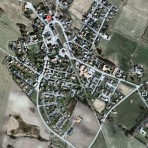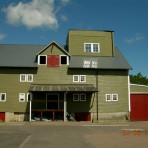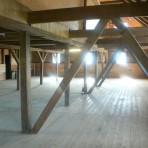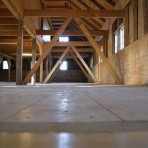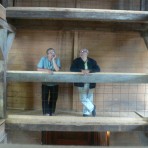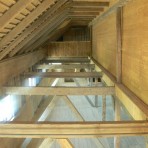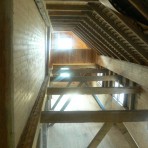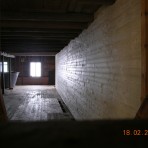“instrument” är den andra upplagan av triennalen på Kulturmöllan i skånska Lövestad. Instrument öppnar första helgen i juli (6/7) och håller helgöppet månaden ut.
Den första triennalen, Shadow & Light, pågick sommaren 2010 och involverade 30 svenska, danska och amerikanska konstnärer. Temat för den andra triennalen – Instrument – opererar kring möjligheten att se den gamla möllan som ett instrument eller verktyg i sin ombyggd och hur de installationer och sceniska uppträden förhåller sig till detta.
.
“instrument” is the second triennial exhibition to be held July 2013 at the Kulturmöllan in Lövestad, South Sweden. The first triennial, Shadow & Light, took place in the summer of 2010 and involved 30 Swedish, Danish and American artists. The theme of the 2nd triennial is “Instrument”, whether of the former flour mill as an instrument in its countryside, or of the installations and performances that react to or animate the existing structure.
The Kulturmöllan is a large timber structure located in the village of Lövestad in South Sweden. There is 600 square meters of exhibition space on 4 levels in the 100 year old solid wood building.
Lövestad is 50 minutes east of the city of Malmo, 75 minutes from Copenhagen Airport, and lies on the route to other art destinations such as the Wanås Foundation, Kivik Art Center, Ystads konstmuseum and Neon Gallery. In Malmo you can visit Malmö Konsthall and Moderna Museet Malmö. Copenhagen has dozens of places to explore and nearby are the outstanding Louisiana and Arken Museums.
.
Images of the mill:
“Instrument” is organized by Marek Walczak, Robert Ek, Lars Eklöw, Johanna Kindvall and Rendel Ibing. It is an artist-run event.
.
“The job of a miller used to be a very common occupation, which is visible in the dispersion of the last name ‘Miller/Müller’ across the population, at the same time it is one of the oldest occupations. Yet the miller had something obscure to him/her, at least that’s how it seems to me. (In contrast to the chimney sweep for instance, who is supposed to bring luck) I guess this was vastly influenced in our culture by works such as ‘Don Quichote’ and ‘Krabat’ (which is also a tale written in the previous Eastern Germany). Especially Krabat creates an inextricably intertwined connection between the miller and the magician, practicing dark magic. The fascination for those tales, a celebration of magic and such things has shifted for our generation towards new technology. (The assumption that new technology has become our new religion, our new fascination, our new magic). The amazement for us lies in technology’s inventions (the classical image of someone in front of a projection with a Kinect and excitement about this new tool.) Interestingly, the occupation of the miller lost its ‘magic’ somewhat when it was industrialized, and the tasks moved from the former miller occupation with their specific knowledge, towards the handling of machines, and with that an occupation underestimated by society.
At the same time, the technology-generation is so alienated from the characteristics of the countryside that the specificities create a feeling of ‘uncanny’ (un/heimlich in the Freudian sense) in us. We aren’t used to complete darkness anymore, to silence, to a life whose rhythms are determined by church bells and cockcrows, and the sound of the trees and animals at night might create goose bumps for the urbanite. It almost seems as if, while digital interactivity becomes more and more common and enters the field of normality, it loses its magic, and loads the non-digital mechanical processes with new magic. – it thus describes precisely the notion of the “un/heimliche” since it is something we are familiar with, yet it creates a feeling of uneasiness. (We are more used to touchscreens, than turning a handle that would activate a wheel, or similar.)”
Divina
